
The central nervous system consists of the brain and spinal cord. Its job is to receive and process information about the outside world, in order for us to react and communicate, keeping our body safe. This information enters our body through our sense organs: eyes, ears, nose, tongue and skin. Special cells within these organs translate the information into signals the brain can understand.
Brain cells, or neurones, are the units that make up the entire brain. In an average human brain, there are approximately 100 billion neurones! These neurones carry the information via tiny electrical signals that zap around your brain and body to help you see, hear, taste, touch and smell.
The 5 senses
Eyes: When light enters your eyes, cells called rods and cones translate the light into electrical signals. These signals are carried from the eye to the brain via the optic nerve, to a region called the occipital lobe. This lobe is in charge of your vision and processes signals to form visual images.
Ears: Speech, music, and noisy traffic are all sounds that enter our ears as soundwaves in the air. When specialised hair cells in the ear detect the waves, nervous signals are stimulated. The signals travel through the cochlear nerve towards the brain to a region called the temporal lobe. These signals are now interpreted as sounds which we can hear.
Touch: Our skin is made up of 3 layers—the outer epidermis, middle dermis and inner hypodermis. Within these layers are specialised cells that detect touch. Touch stimulates signals to be sent through nerves (bundle of fibres made up of neurones) towards the parietal lobe of the brain.
Tongue: While we eat, the chemicals in food enter our taste buds. These chemicals stimulate specialised cells inside the taste buds. Signals are then sent to various nerves of the brain including the facial, glossopharyngeal and vagus nerves. These nerves carry the signals to a part of the brain called the medulla oblongata, which relays them up to the parietal lobe of the brain.
Nose: When we sniff or smell, chemicals in the air trigger signals is the nose. These signals travel up nerves in the nose to the olfactory bulbs. The olfactory bulbs contain neurones that transmit information along olfactory nerves up towards the frontal lobe of the brain.
Supersenses exhibition
At the Supersenses exhibition, we were thrilled to find that so many of you were interested in learning about our senses, and the structure and function of neurones. We used colourful pipe cleaners to build little neurones and discussed exactly how these neurones talk to each other to make the brain work. We then moved onto a larger structure—the brain itself! The brain hats we created illustrated where each lobe of the brain was and its function.

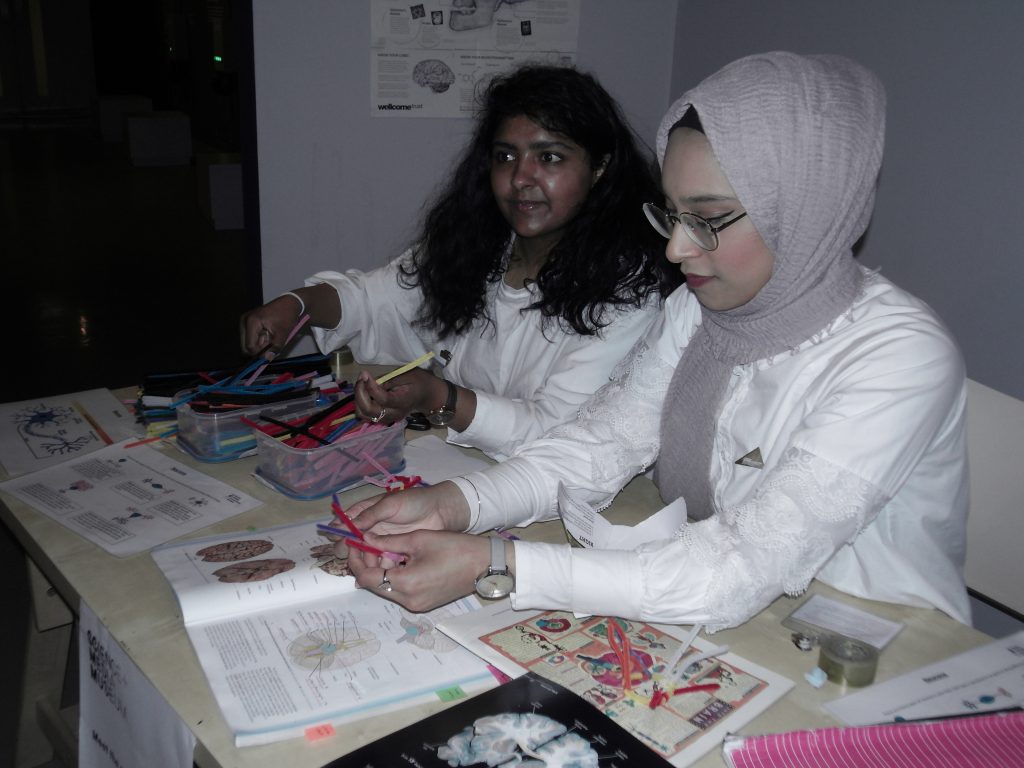
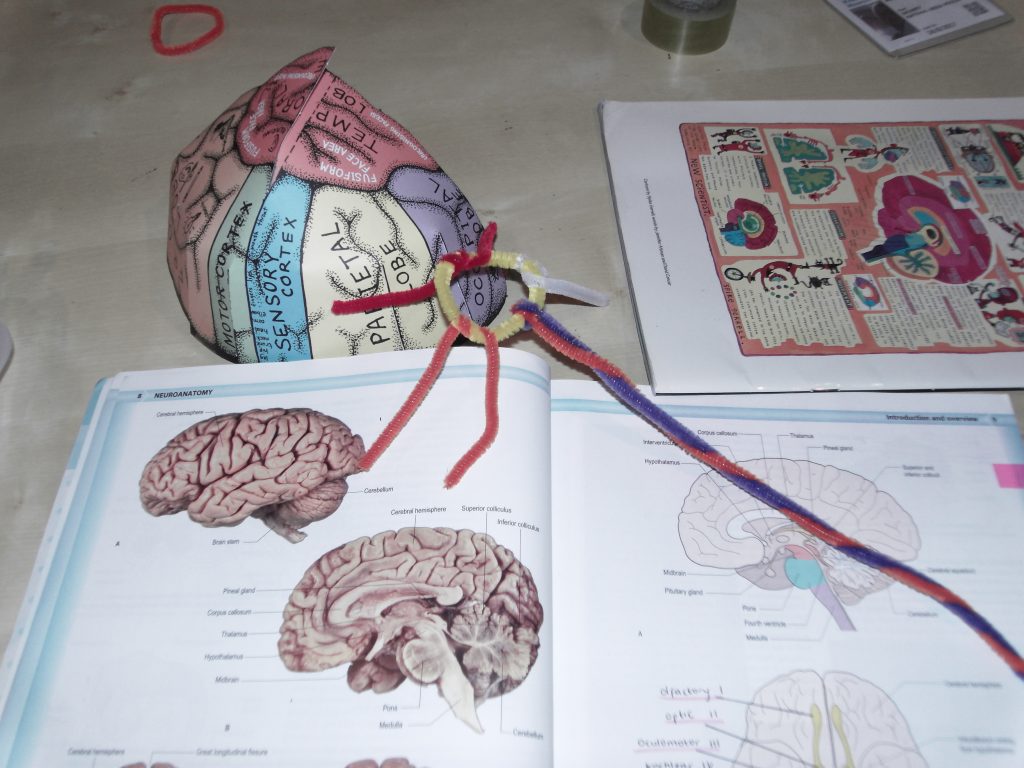
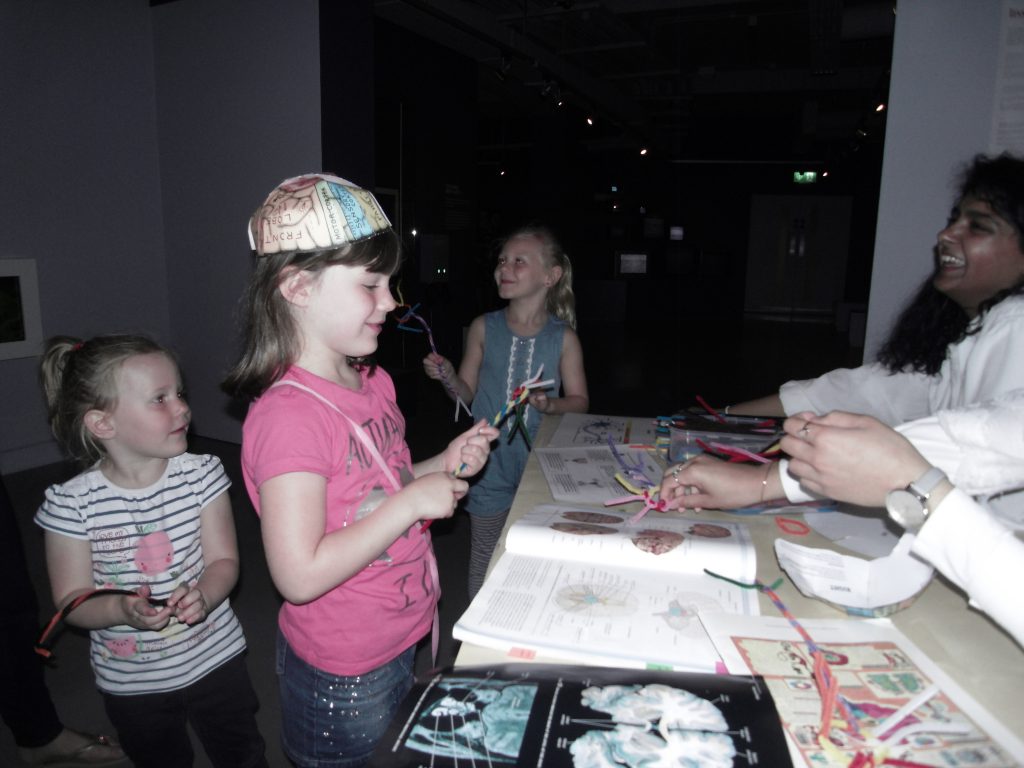
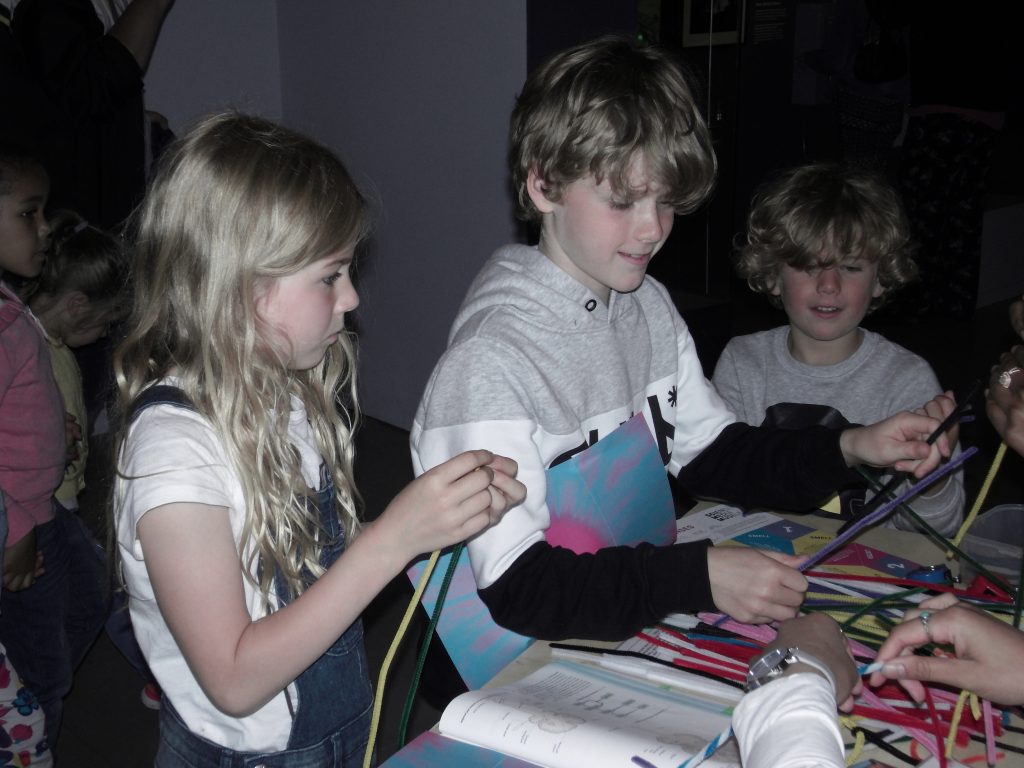
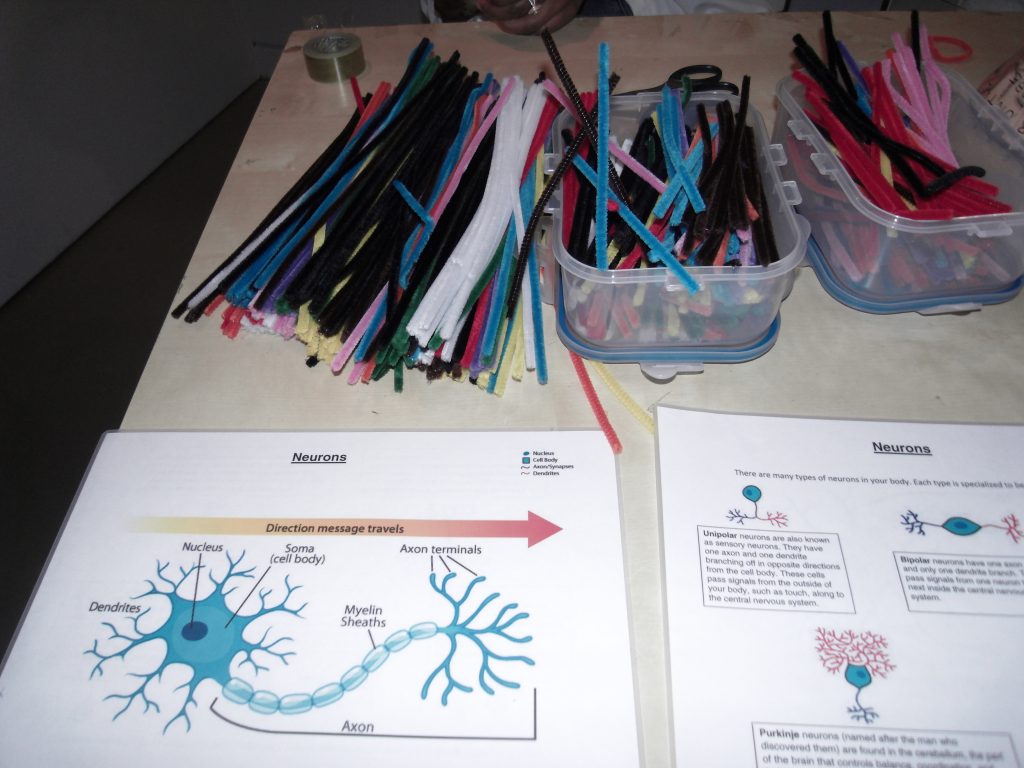
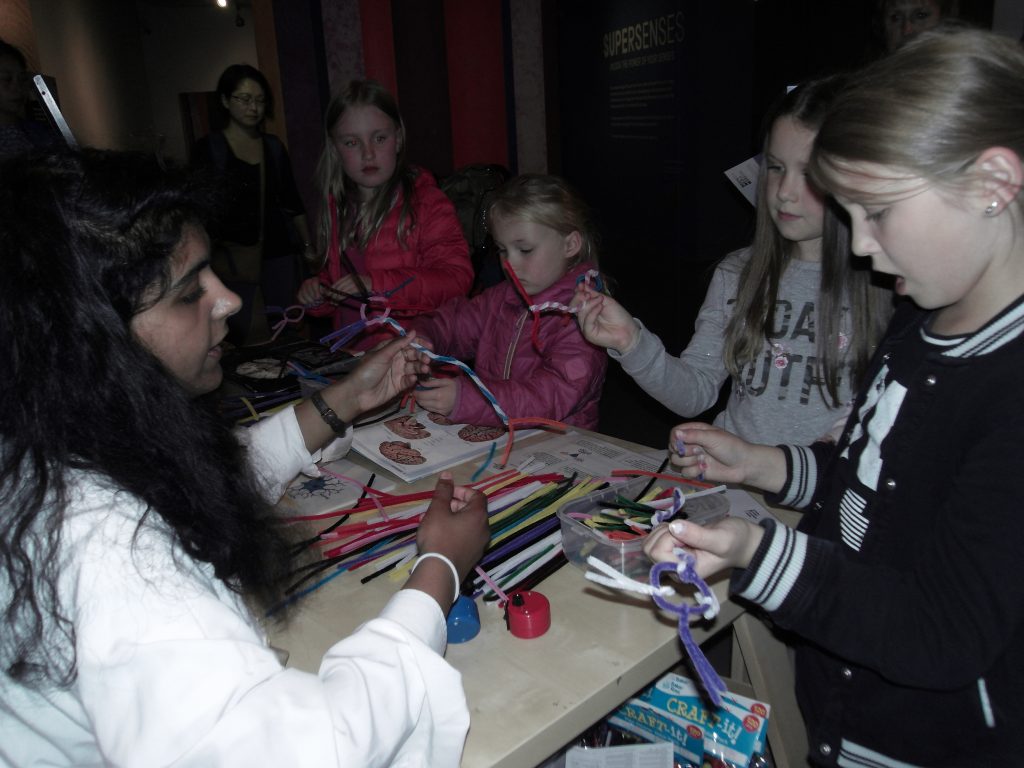
You can visit Supersenses at the National Science and Media Museum until 8 October 2017.